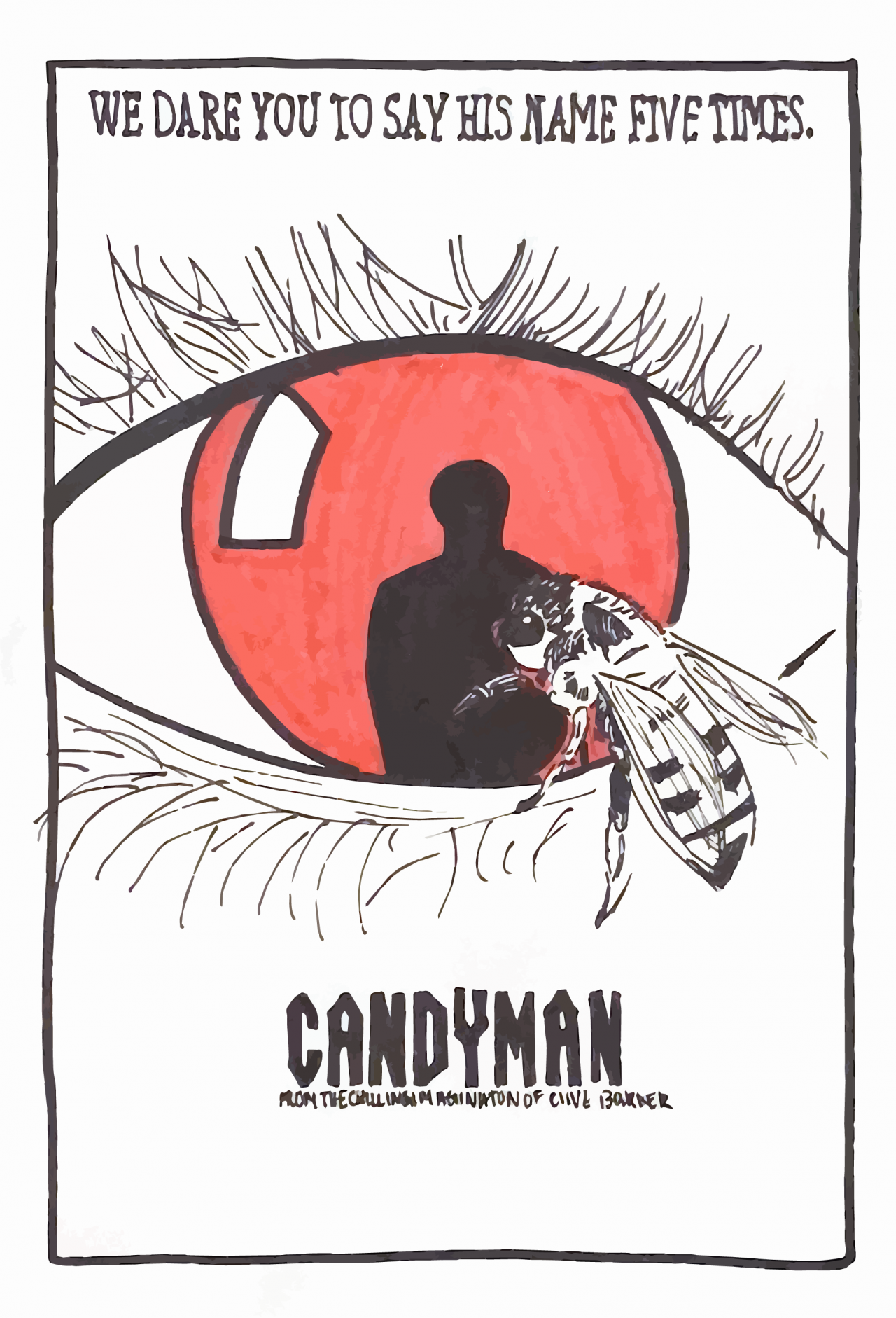illustration by Gabrielle Rodriguez
Today, horror is a genre of film that tends to be seen as trivial or unworthy of respect within the film community.
This is mostly due to the tropes they tend to entail. For example, slashers are known for constantly having hot young people drinking, smoking weed, getting laid, and then being murdered by someone or something until the virgin girl either escapes, defeats the killer, or seemingly defeats the killer before they open their eyes in a “shocking” sequel-bait ending.
In spite of all of these issues, there are many that break from this mold, actually attempting and occasionally succeeding in discussing social issues going on at the time. Granted, some do it in an incredibly ham-fisted way, but when done right, horror can be a genuinely fascinating way to touch on real issues. And, if we’re going to bring up a specific example, then I think it’s best to discuss Candyman from 1992.
The film follows Helen Lyle, a Chicago grad student who opts to do her thesis on urban legends, leading her to discover the legend of the “Candyman”. If you say his name 5 times in front of a mirror (or literally any reflective surface), he will find you and he will slice you from groin to gullet with his hook for a hand.
Now, this sounds very stereotypical, and if in the hands of someone else, it damn well might have been (as the sequels proved); but rather than just be 101 minutes of Candyman murdering people, the film instead delves into the themes of race and social class in the urban areas of the United States.
From that, the backstory of the Candyman should be fleshed out. The character was the son of a slave, and he grew up to be a prolific painter. Despite his origins, it seemed as if he was accepted by high society, but then he fell in love with a white woman and fathered her child. In the end, he was lynched by an angry mob, who sawed off his right hand before smearing him in honey as bees stung him to death. Because of this, once summoned, Candyman is seen to have a hook on the stump where his right hand used to be, as well as a chest cavity devoid of flesh and internal organs aside from his skeleton; instead, his chest is filled with bees.
What makes Candyman so interesting is that its titular, sympathetic villain doesn’t truly make his first appearance until nearly halfway through the film. The film’s plot leading up to that point followed Helen investigating the murder of a young woman in Cabrini-Green after hearing that she was killed by Candyman. She believes that this character is just an urban legend in order to cope with the issues in their daily lives. Hell, in this first half, Helen gets attacked by a thug who has been claiming to be Candyman and wreaking havoc. So with this, Helen tells a young child that Candyman isn’t real. “… should we tell her now? Wait? Yeah, let’s wait.”
Candyman’s congregation is who, he believes, gives him power. People believe in him. They respect and fear him. And Helen just had to try to get rid of that.
Instead of actually killing Helen, he decides to traumatize her and make everyone think that she’s insane. There’s a reason for this, but I’d prefer not to say it, as you should really just watch it.
The thing with Candyman as a character is that he isn’t just some slasher with a generic motivation. He isn’t just pure evil or anything like that. He’s a tragic villain. He’s an idol in the eyes of his “congregation.” He’s a legend… and then the sequels forgot about all of that, but let’s not get into that.









Kay Asbill • Oct 30, 2020 at 10:18 am
Great commentary Om. Very well written and depth I had never considered. Thanks for making me look at this as more than urban legend. K
BELKYS GUERRERO • Oct 28, 2020 at 8:26 am
Excellent history . I lovely